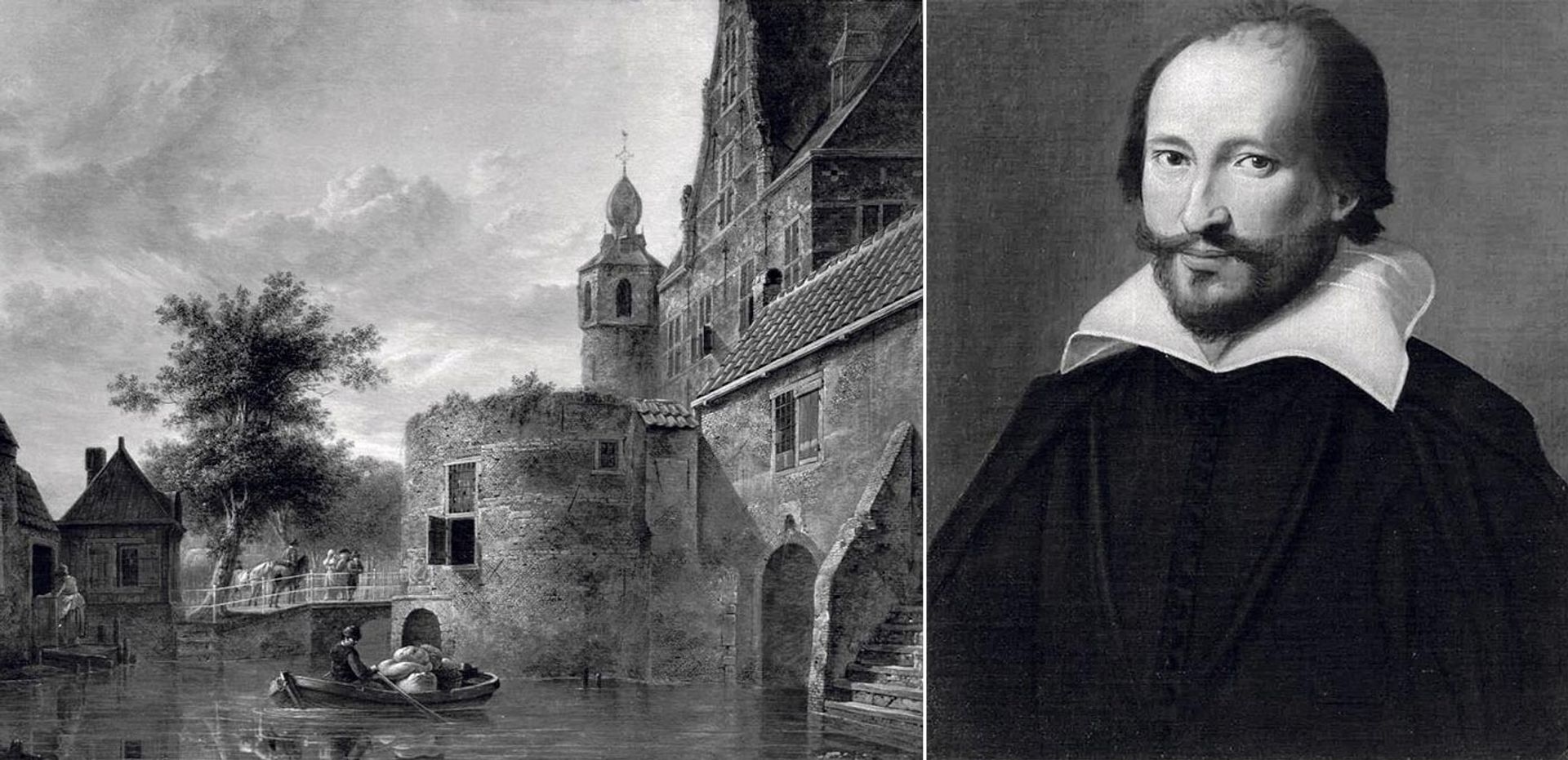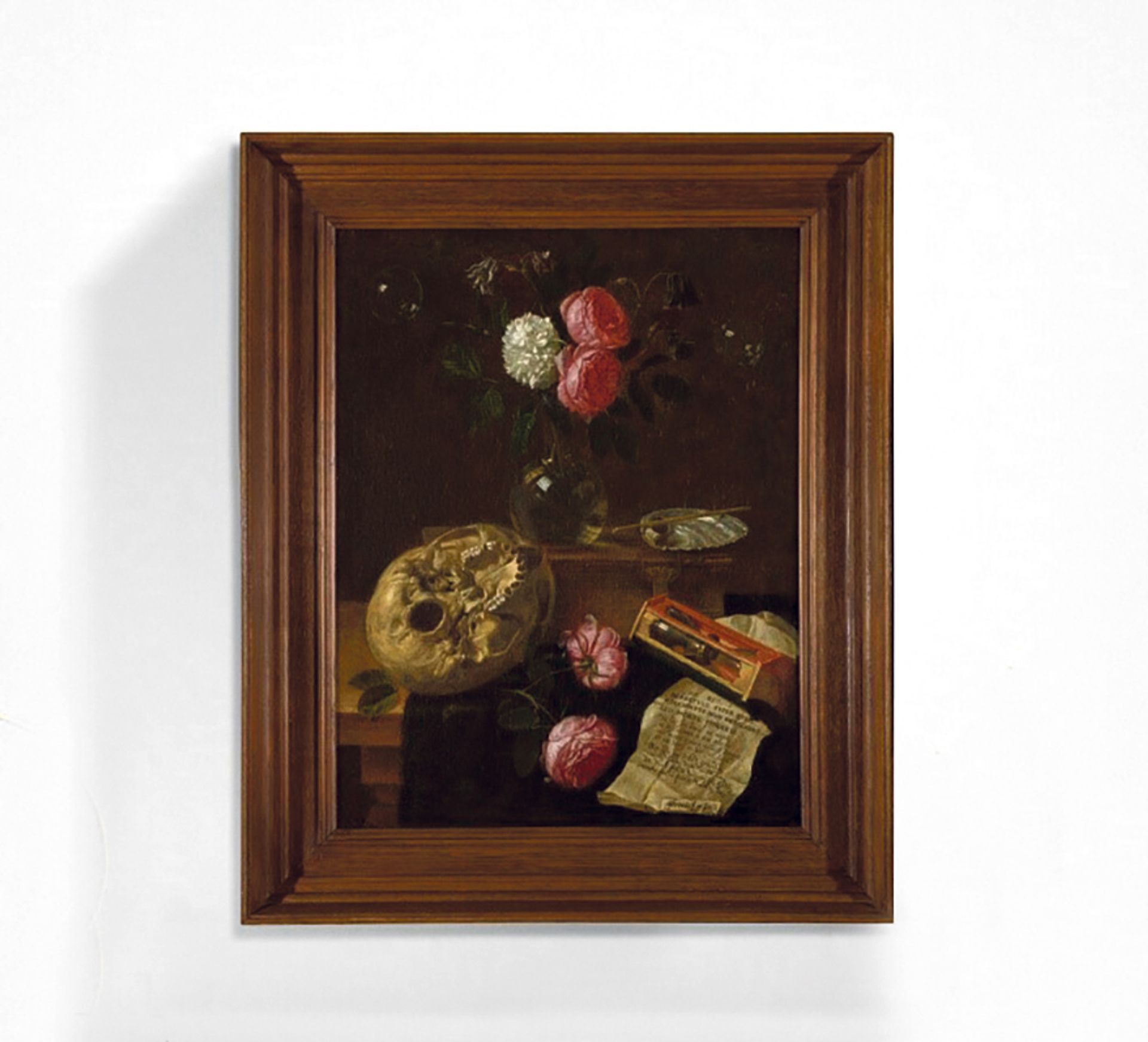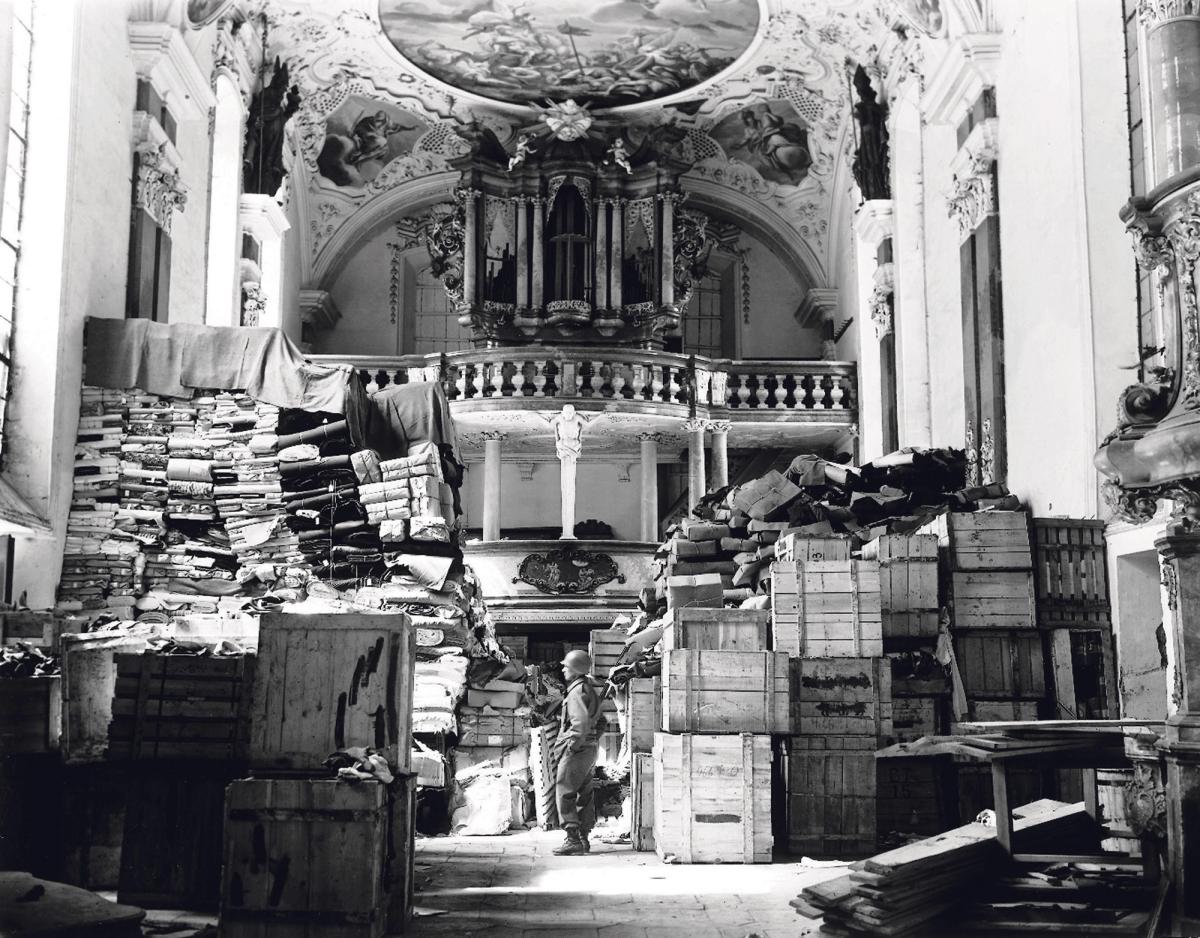This month marks the 25th anniversary of the release of the Washington Principles on Nazi-confiscated art, which act as guidelines for how assets, particularly art, seized by Nazi Germany before and during the Second World War can be returned to the rightful owners or their heirs. Though the 11 principles established during the Washington Conference on Holocaust Era Assets in 1998 are non-binding, they have provided a framework to help restitution cases within different legal systems internationally. In the quarter-century since the conference and nine decades after the Third Reich was established, works of art with shaky provenance are coming under more scrutiny than ever before, according to James Palmer, the founder of the Canadian firm Mondex Corporation, which specialises in Holocaust restitution cases.

Still missing: Jan van der Heyden’s View of a Castle (left) and Francisco Pacheco’s Portrait of a Bishop (right) are among four paintings and a sculpture stolen from the Heppner collection
“The Holocaust was a completely different situation in terms of the systematic theft and how well-organised, pervasive and broad it was as part of the effort of the Axis countries,” Palmer says. “It was a mass, orchestrated, unprecedented theft.”
Seizing Jewish property in occupied territories was a central part of the Holocaust, and Nazi Germany placed particular importance on taking art, whether to sell for a profit, build private collections or to furnish the Führermuseum, the national art museum planned by Adolf Hitler, himself a failed artist, for his hometown of Linz, Austria. After the war, it was estimated that as much as one-fifth of all moveable art in Europe had been confiscated by Nazis during the Third Reich.
One such case is that of Max Amichai Heppner, a 90-year-old now living in South Florida. Born to a Jewish family in the Netherlands, he spent the years from the age of eight to 11 hiding from Nazi forces in a chicken coop on a farm. His father, Albert Heppner, was an art dealer who specialised in 17th-century Dutch art, first in Berlin and then in Amsterdam when he and his wife, Irene, fled persecution in Germany after the Nazi party came to power. While Albert was able to rescue most of his inventory from seizure after the invasion of the Netherlands by disguising copies as genuine works, Nazi forces did steal six paintings by well-known artists that hung in the family’s Amsterdam home, along with a marble bust of Max’s grandmother. Four of those paintings and the marble sculpture have not been recovered: Jan van der Heyden’s View of a Castle; Isaac Koedijck’s Youthful Wine Drinker; Francisco Pacheco’s Portrait of a Bishop; Herman Saftleven’s A Marine Scene and a bust of Albert’s mother, Frieda Cornelius Krämer, by an unknown artist.

Peeter Sion’s Vanitas with an hourglass and skull, from the Levie collection, was recovered and last year sold for €13,860 (including fees) in a Christie’s online auction Christie’s Images Ltd
After the area surrounding the farm where the Heppners hid was liberated in 1944, Albert began to re-establish himself as an art dealer. When he died suddenly from liver failure in June 1945, just months before the Second World War officially ended, he had been on his way to newly liberated Amsterdam to try to recover his business, according to Max. After the war, Irene found two stolen works still hanging in the family’s old Amsterdam apartment, apparently left in place by Nazi assessors: Francisco Herrera the Younger’s Fish Still Life and Bartholomeus Breenbergh’s Ruins of the Forum Romanum (1633). The other four works, and the bust, were nowhere to be found. Irene and Max tried to track the works down, with the best leads suggesting the works were in Bavaria, but with no success.
A complicated lineage
In 1940, the year Nazi Germany invaded the Netherlands, the Heppners became entwined with another Jewish family who would unknowingly shape the trajectory of their lives. Albert was teaching an art appreciation class at the Rijksmuseum in Amsterdam, and took Irene to another class held at the museum. There, the Heppners met another couple, the Levies. Sam Levie was a Jewish textile trader and art collector and, on hearing that Albert taught a class at the museum, signed up to study with him. Levie eventually made Albert his sole heir. The two men lost contact when Albert planned his family’s escape from Amsterdam in 1942; while the Heppners were able to hide out in the chicken coop, the Levies were arrested before they could flee Amsterdam and were murdered in the gas chambers in Sobibor, Poland, in May 1943.
In 1946, after Albert’s sudden death, Irene was visiting a lawyer’s office when the man who handled her paperwork said the name Heppner had appeared on another document. He pulled out Levie’s will, which, to Irene’s surprise, had the Heppner name listed on it. However, the will was contested by other parties and, after a years-long court case, the Heppners ended up with only a fraction of the Levie fortune in 1952. By that time, Irene and Max had left the Netherlands for the US. But with money from the Levie estate, they were able to afford a car for the first time. In Levie’s honour, they named their new Chevrolet “Levie’s Chevy”, according to Max.
Irene, who died in 1997 aged 93, never knew about her husband’s role in Levie’s extensive art collection. Max himself wasn’t aware of the collection until 2012, when he was approached by Mondex Corporation, which offered to represent him in efforts to recover more Levie assets. So far, Mondex has helped recover three paintings from Levie’s collection. Max sold all three via Christie’s auction house. The first, a seascape by Adam Willaerts, fetched €107,100 (including fees) at Christie’s Amsterdam in 2014. The following year, a 1668 painting of Amsterdam City Hall from the studio of Gerrit Berckheyde sold at Christie’s London for £30,000 (with fees). Last year, a still-life of a human skull resting on a vanity by Peeter Sion fetched €13,860 (including fees) in a Christie’s online auction.
“It’s unusual that we’re dealing with someone who suffered in the Holocaust directly,” Palmer says. “The money in that case was nominal, but the pride and joy was huge.” (Palmer says the financial agreements between Mondex and its clients are private.) It is still unclear how many works of art Levie owned, but Palmer says Mondex records indicate that there could be as many as 32 still missing.
Determination and education
Max worked as a public information specialist for the US Department of Agriculture and has published six books, including one for children called I Live in a Chickenhouse. Before the Covid-19 pandemic, he visited schools to talk about the Holocaust. “My assignment as a Holocaust survivor is to put the emotion of the thing behind me as much as I possibly can,” he says. “It isn’t easy because it catches up with me at the most unexpected moments.”
While Max continued his mother’s work to try and reclaim the art stolen from his family’s collection, his pursuit is “less urgent than before”, he says, adding that “so much water has gone over the dam, and I don’t want to live my life trying to recover from being a victim. I want to live my life free from anxiety about stuff that happened a long time ago.”
Max says he is working with Hollywood producers on a movie about his family’s story, and the series of coincidences that led them to meet the Levies, through the war and to the US. “It blows me away, as it is so dependent on coincidence. It starts a train of thought that’s hard to deal with,” he says. “You could say in a way the universe, or God, or whatever wants this to happen. And really, art is much less important than the lives of people, so why do some things work and other things not work? It’s an unanswerable question.”
Roadblocks still standing in the way of restitution include private collectors, museum curators, dealers and auction house specialists who are unaware of problematic provenances or unwilling to examine the pasts of the objects they work with. However, Palmer says that there has been a shift in attitude about how art changed hands during the Second World War, concerning not just outright looted art but work that may have been sold under duress before or during Nazi occupation. He draws a link between the cases Mondex handles and the restitution of art and artefacts linked to colonialism.
“We’re still dealing with a lot of resistance, but there’s certainly a sea change in the recognition of human rights,” Palmer says. He credits the Washington Principles as having had “an incredible, positive impact”, noting that “without it, probably not much would have happened”. But the principles are not perfect, Palmer says. Because they are non-binding, they have been deemed “soft law” by some parties trying to avoid restitution.
“There still needs to be a conscious desire among possessors, governments and government officials to do the right thing, whether it’s colonial theft, or orchestrated theft during the Holocaust,” Palmer says.


